Introduction to Hirosaki University
Overview
Hirosaki University (Japanese: 弘前大學, abbreviated as 弘大/ひろだい) is a national university located in Hirosaki City, Aomori Prefecture, Japan, founded in 1876. Its history can be traced back to the establishment of Hirosaki High School, Aomori Normal School, Aomori Youth Normal School, Aomori Medical College, Hirosaki Medical University and other educational institutions in 1876. In 1949, these schools merged to form the new Hirosaki University. Hirosaki University is the first university in Japan to abolish the medical department medical bureau system, which was of great significance at the time.
Campus
The main campus of Hirosaki University is located in Bunkyo-cho, Hirosaki City, Aomori Prefecture, including the following campuses:
Bunkyo-cho Campus: Located in Bunkyo-cho, Hirosaki City, it is the main campus with most of the faculties and graduate schools.
South Campus: Located in the south of Hirosaki City, it mainly has some research institutions and laboratories.
Educational philosophy
The educational philosophy of Hirosaki University is to cultivate outstanding talents with international vision, innovation ability and social responsibility. The school emphasizes the combination of theory and practice, pays attention to the all-round development of students, and encourages students to actively participate in social activities and international exchanges. The school is committed to contributing to the progress of society and mankind through high-level education and research.
Disciplines and Faculties
Hirosaki University has multiple faculties and graduate schools, covering a wide range of subject areas:
Faculty of Humanities: including human culture courses, modern society courses, etc.
Faculty of Education: including education courses, children's education courses, etc.
Faculty of Medicine: including medical science, health science, etc.
Faculty of Engineering: including mechanical engineering, electrical and electronic engineering, civil engineering, materials engineering, etc.
Faculty of Agriculture: including agricultural science, environmental science, biological production science, etc.
Graduate schools include:
Graduate School of Humanities and Social Sciences: offers master's and doctoral degree programs in the fields of human culture and modern society.
Graduate School of Education: offers master's and doctoral degree programs in the fields of education, children's education, etc.
Graduate School of Medicine: offers master's and doctoral degree programs in the fields of medicine and health science.
Graduate School of Engineering: offers master's and doctoral degree programs in the fields of mechanical engineering, electrical and electronic engineering, civil engineering, and materials engineering.
Graduate School of Agriculture: offers master's and doctoral degree programs in the fields of agricultural science, environmental science, and bioproduction science.
Features
School of Medicine: Hirosaki University's School of Medicine enjoys a high reputation in Japan, especially in medical education and research. The school is one of the eight new medical universities in Japan, and the school's advantageous disciplines include pediatrics, internal medicine, and surgery.
School of Agriculture: Hirosaki University's School of Agriculture has outstanding performance in the fields of agricultural science, environmental science, and bioproduction science, especially in agricultural technology and environmental sustainability.
International Exchange: The school has established cooperative relations with universities in many countries and regions, providing students with abundant international exchange and internship opportunities.
Industry-University-Research Cooperation: The school cooperates with many companies and research institutions to carry out joint research and internship projects, providing students with abundant practical opportunities.
Featured Research Institutes: The school has a number of research institutions, such as the Hirosaki University Institute of Medicine and the Hirosaki University Institute of Agriculture, which provide advanced research platforms for scientific researchers.
Ranking
According to the 2024 QS World University Rankings, Hirosaki University ranks in the 801-1000 range among universities worldwide. The school is particularly outstanding in fields such as medicine and agriculture.
Cost
The tuition fees at Hirosaki University are relatively reasonable because it is a national university. Generally speaking, the annual tuition fees for undergraduates are around 535,800 yen, and graduate students may be slightly higher. In addition, there are other fees such as admission fees and facility fees.
Campus Life
The campus environment of Hirosaki University is beautiful and the facilities are modern. The school offers a variety of club activities and academic research opportunities to help students develop in an all-round way. The school has also established cooperative relations with many well-known universities around the world, providing students with rich international exchange and internship opportunities.
Internationalization
Hirosaki University attaches great importance to international education and offers a variety of international exchange programs and English-taught courses. The school has established cooperative relations with universities in many countries and regions, providing students with rich overseas study and internship opportunities. The school enrolls a certain number of international students every year, and the proportion of international students increases year by year, creating a multicultural and international learning environment.
Contact information Address: 〒036-8560 1-1 Bunkyo-cho, Hirosaki City, Aomori Prefecture Tel: +81-172-39-3211
-
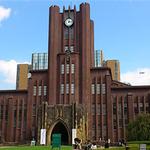
The University of Tokyo
-
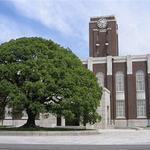
Kyoto University
-

Osaka University
-
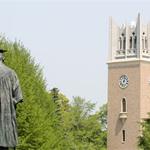
Waseda University
-

Hitotsubashi University
-
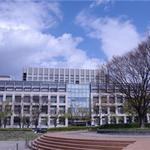
Nagoya University
-
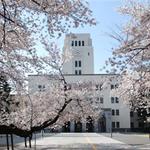
Tokyo Institute of Technology
-
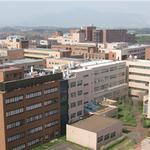
University of Tsukuba
-

Keio University
-
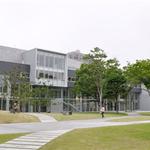
Tohoku University
-

Mesoamerican University
-

Istmo University
-

Mariano Galvez University of Guatemala
-

Regional University of Guatemala
-

Galileo University
-

Francisco Marroquín University
-

Rafael Landívar University
-

University of the Valley of Guatemala
-

University of San Carlos of Guatemala
-

Technological Institute of Tlaxcala Plateau
-

Golfo University
-

Technological University of South Sonora
-

Technological University of Huejotzingo
-

Tizimín Institute of Technology
-

Chilpancingo Institute of Technology

